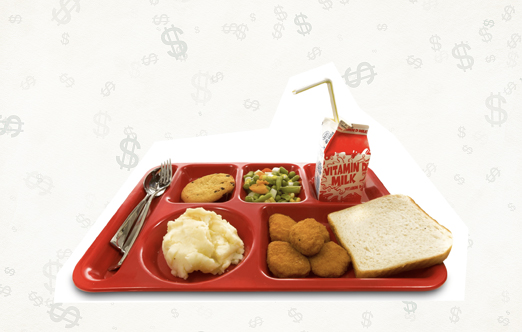
It is no news that good quality, nutritious food is necessary for proper physical and mental development of children. A human body can absorb the maximum amount of nutrients during the growing years. When talking about the importance of children’s diets, it is impossible to leave out school meals from the context.

School meals are more than just finances and food. School meals were introduced and improved to provide healthy meals, which are sometimes the only meals that a child eats in a given day. While there is a stigma associated with receiving free or reduced-price meals, many chats and memories happen at school meals. The unprecedented COVID-19 pandemic, and the introduction of the Child Nutrition COVID-19 waivers, made it possible for every child to receive free school meals. The waivers have extended multiple times during the past couple of years. Now that the CDC has relaxed measures to stop the spread of the COVID-19 disease, the school meals are no longer free for many school children.
In fact, for the school year 2022–23, eligible families in most states must apply to receive reduced-price or free meals. During the pandemic, many schools were not required to collect free and reduced-price meal applications. In the past, it has been found that miscommunication or misinformation around the application process leaves several eligible school children without access to free school meals. Additionally, several factors, such as access to information via the internet and social media and access to transportation, play an important role in ensuring that all eligible children are fed.
Reducing food and nutrition security has been a priority and necessity for several states to meet national goals. The United Nations‘ second sustainable development goal (SDG) is Zero Hunger by 2030 and the world is nowhere close to achieving Zero Hunger. With President Biden announcing the second White House Conference on Hunger, Nutrition, and Food Security in September in the United States, it seems that the US government is likely to take actions to find solutions to hunger and food insecurity problems. The first conference held back in 1969 resulted in landmark legislations, and the second conference seems promising as well.
To reduce food and nutrition insecurity, California has become the first state to offer free school meals (breakfast and lunch) in all public schools. Like many food insecurity researchers, the education leaders of California are convinced that ensuring access to free, good quality meals is a key step to eliminating food insecurity, and I fully agree. On the other hand, many states including Mississippi have witnessed an increase in price of school meals. Mississippi has not performed very well in hunger, food insecurity, and chronic diseases statistics. The increase in school meal prices will only lead to worsening of these statistics.
The only way to continue free school meals for everyone, while eliminating unpaid school meals debt is to have President Biden and the US Congress take necessary steps. Several national, state, and local bodies are doing their best to advocate for universal school meals. These bodies also need local support. School Nutrition Association has initiated a petition on change.org urging the U.S. Congress “to provide meals to all students at no charge.” Of the 15,000 signatures requested, the petition has received over 10,000 signatures. To sign the petition, go to: https://www.change.org/p/every-child-deserves-nutritious-school-meals-free-of-charge.
Views are personal
Dr. Kritika Gupta works at the Center for Research Evaluation at the University of Mississippi. She graduated with a Ph.D. in Nutrition from the University of Mississippi and was a 2022 Doctoral Class Marshal. Kritika gave her TEDx talk on Resilience to Hunger in 2021.




1 thought on ““Every Child Deserves Free School Meals,” by Kritika Gupta”